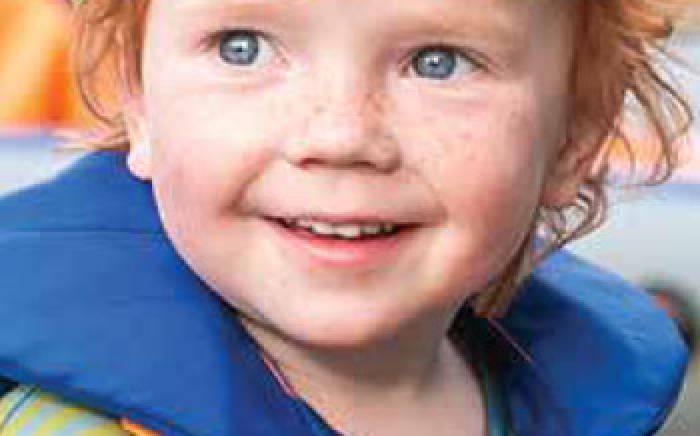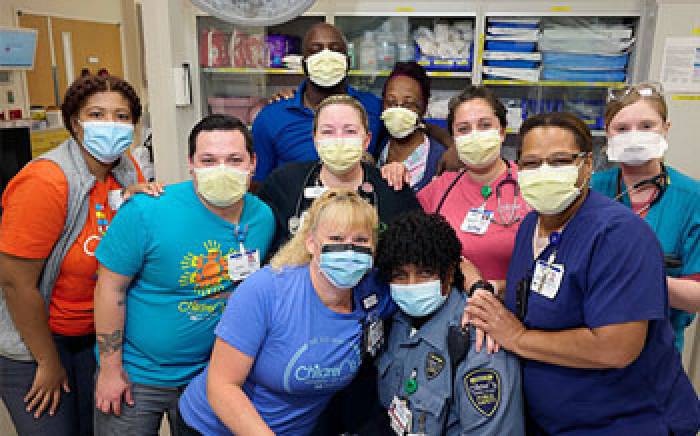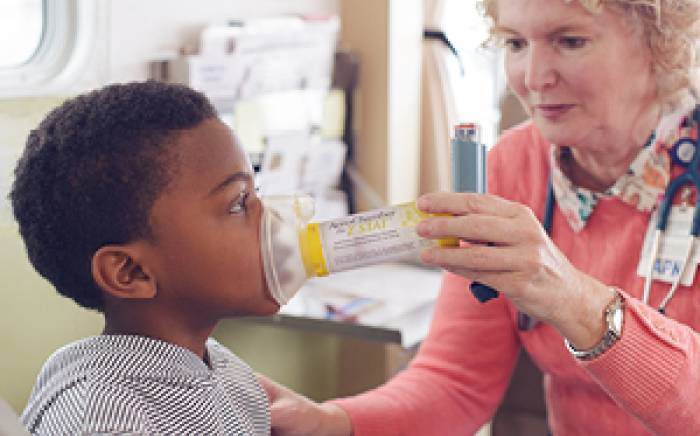 Joe Finney, MD, belongs to a small club that makes a big difference for little patients.
Joe Finney, MD, belongs to a small club that makes a big difference for little patients.
Dr. Finney, a Washington University fellow at St. Louis Children’s Hospital, is one of less than ten physicians in the U.S. specializing in both Pediatric Emergency Medicine (PEM) and Emergency Medical Services (EMS).
In other words, he’s trained to care for critically sick and injured children — even before they come to the hospital.
Starting appropriate treatment in the field before arriving at the emergency room, or even knowing when to go to a pediatric emergency room rather than just the closest hospital, can give pediatric patients a better chance at a good outcome, says Lindsay Clukies, MD, a Washington University emergency medicine physician at St. Louis Children’s.
“We’re very lucky to have Dr. Finney at St. Louis Children’s Hospital,” she says.
For the past year, Dr. Finney has been responding to 911 calls with area EMS crews, including Christian Hospital EMS and Mehlville Fire Protection District.
As part of the dual Washington University PEM/EMS fellowship he is completing at Children’s, he supports, trains and educates EMS crews to provide expert emergency care to pediatric patients. He rides along on about 30 calls a week and answers up to 30 phone calls a week from EMS partners served by Washington University EMS.
His goal, he says, is to elevate pre-hospital care for area children and strengthen the relationship between emergency responders, St. Louis Children’s Hospital and the community.
Only about 10% of 911 calls involve pediatric emergencies, so training for paramedics and emergency responders typically focuses on adult patients, says Dr. Finney. As a result, responders often feel less comfortable or less prepared when a pediatric call comes in.
Responding to a critically sick or injured child can be especially difficult.
“It’s something a paramedic may see only once or twice in their career. It can be very uncomfortable because they’ve had limited training and exposure to taking care of children,” Dr. Finney says.
But education and hands-on support has helped Dr. Finney raise both the knowledge and comfort level among responders. Instead of relying on the “scoop-and-run” technique of simply getting the pediatric patient to the closest medical facility as quickly as possible, crews are learning the value of starting interventions in the field, taking patients to specialized pediatric facilities and communicating with the facilities before arrival.
“If we have a 10-minute heads-up that a pediatric trauma case is on the way and that they’ve started an IV in the ambulance, we can have appropriate and necessary interventions ready and that can make all the difference,” says Dr. Clukies.
Having a physician along on a pediatric 911 call also helps builds trust among parents in the community, says Dr. Finney.
“Parents are surprised to find me in their living room when they call 911,” he says. “But knowing that St. Louis Children’s Hospital sent a doctor to evaluate your child can alleviate a lot of parents’ stress. It serves as a great conduit and improves the perception of EMS services in the community.”
Dr. Finney feels a connection to the EMS responders he works with because he once was one of them.
He was a history major in college with no intention of entering the medical field until he took an elective EMS class and found his calling. He decided to switch to emergency medical technician school, planning to work on ambulances and in emergency rooms.
Then one day, while working as a student EMT in a Lincoln County, Missouri, emergency room, he watched as a pediatrician raced from his home to resuscitate a child who was in cardiac arrest after an accident.
“Right then, I said, ‘I want to be that guy. I want to do that with my life,’” he says.
Finney eventually left his EMT career and began working to become a physician. He felt like he had come full circle recently when he visited that same Lincoln County agency where he started as an EMT, but now as a PEM/EMS physician to provide pediatric focused education.
When Dr. Finney completes his fellowship in December 2022, he will become the Children’s EMS medical director. His goals in that role include offering support, education and training to more area EMS agencies.
And that is a good thing, he says, not only for emergency responders, but for area children.







